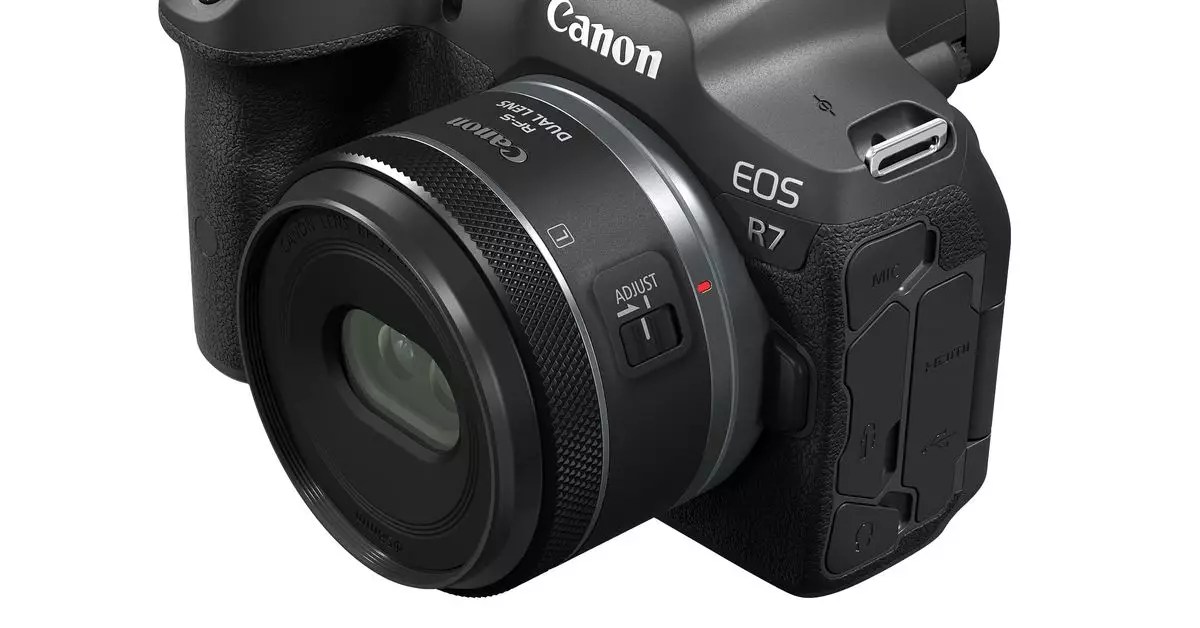The realm of photography and videography is perpetually evolving, and Canon has once again underscored its commitment to innovation with the introduction of its new RF-S7.8mm F4 STM Dual lens. This article delves deep into the lens’s features, its intended usage, and its competitive positioning within the growing market of 3D and VR content creation.
Canon’s RF-S7.8mm F4 STM Dual lens stands out as a more accessible tool tailored for creators intrigued by the world of 3D and virtual reality (VR). With an estimated retail price of $449.99, it positions itself commendably below Canon’s established dual-fisheye lenses which typically range from $1,099 to a staggering $1,999. Designed to support the Canon EOS R7, this new optical marvel aims to democratize 3D content creation, especially for creators focusing on immersive experiences like those experienced on the Meta Quest 3 or Apple Vision Pro platforms.
One of the most striking attributes of the RF-S7.8mm lens is its compact design, encapsulating sophisticated stereoscopic technology in a housing reminiscent of traditional 2D lens structures. This innovation does come at a price, however; the lens captures a field of view of just 63 degrees, a mere third of what higher-end alternatives like the RF5.2mm F2.8 L lens offer with their 180-degree capture capabilities. Such specifications suggest that while this lens is an excellent entry point for budding creators, it may struggle to match the expansive vision offered by its pricier counterparts.
The lens features an aperture range from f/4.0 to f/16, which is versatile for various shooting conditions. Equipped with autofocus and manual focus controls for both left and right sides, this level of adjustability allows creators to harness their artistic demands effectively. Yet, users must note that the strongest 3D effects occur when subjects are positioned close to the lens, ideally within a range of 6 to 20 inches. This limitation could prove challenging for those accustomed to capturing expansive scenes, as the lens’ efficacy diminishes with distances beyond this ideal range.
Capturing stunning 3D images and videos is only part of the equation. To bring these visuals to life, users will need to process their footage through designated software. Canon provides the EOS VR plugin for Adobe Premiere Pro and its EOS VR Utility software for both Mac and PC users. While these tools facilitate the transformation of raw footage into captivating 180-degree 3D content suitable for VR or augmented reality (AR) headsets, they necessitate a paid subscription. This additional cost could deter some prospective users, potentially making them reconsider their investment in the overall ecosystem Canon is pushing.
In the competitive landscape of 3D lens technology, Canon’s RF-S7.8mm lens stands out for its affordability. For creators who recognize the value in producing engaging 3D content without incurring exorbitant equipment costs, this lens may represent a turning point. While the total cost for a complete setup—namely pairing the lens with the Canon EOS R7—exceeds $1,700, this remains a more budget-friendly option compared to other high-end gear which can quickly escalate to prices exceeding $6,000.
However, aspiring videographers should weigh the trade-offs between the RF-S7.8mm lens and its pricier rivals. The increased depth of field and richer 3D effects from higher-end lenses, coupled with their robust build quality, could render them more appealing for professionals seeking premium results.
Canon’s RF-S7.8mm F4 STM Dual lens represents a significant stride towards making 3D videography accessible to a broader audience. With its innovative design, competitive pricing, and tailored resolution for close-range subjects, it opens the door for new creators exploring VR and spatial videos. However, the lens’ limitations, in conjunction with the processing requirements, invite scrutiny about its long-term viability for dedicated professionals. All in all, this lens is a compelling entry point for hobbyists and creators looking to dip their toes into the exciting waters of 3D content. With the right applications and techniques, it may indeed provide the necessary tools to create immersive experiences in an ever-evolving digital landscape.


Leave a Reply